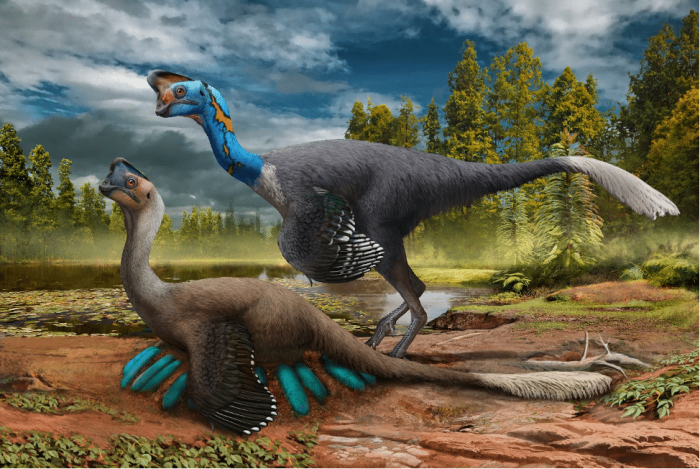Birds are modern dinosaurs.
It wasn't really all that long ago that this statement was seen as a total myth. Sure, a fossil of Archeopteryx—widely seen as the first-ever 'bird'—was found way back in 1860. But that was a bird, not a dinosaur. They were different animals, period.
Then in the 1990s, fossils of feathered dinosaurs started being discovered. And the debate over the connection between birds and dinosaurs started heating up! Today, it is widely accepted that modern birds are the descendants of dinosaurs, especially two-legged theropods like raptors. (There are even some researchers who insist that raptors have more in common with birds than other theropods like T. rex, and should be seen as a totally different line of animals.)
A big reason why there is so much debate over this? These creatures died long ago. Everything that we know about them and how they lived comes from fossils. Which is why a new discovery from China is so exciting.
It is a fossil of a dinosaur sitting on eggs.
Keeping things warm

The fossil of a dinosaur sitting on eggs. (Shundong Bi/Indiana University of Pennsylvania)
The 70-million-year-old fossil is of an oviraptorid (this is a type of ostrich-like dinosaurs—the name means "egg thief"). The animal's remains are frozen in a crouch over top about two dozen eggs. Even more amazing? About seven of those eggs were ready to hatch at the time the fossil was made. This is the first time this exact situation has ever been found.
Why is that a big deal?
Fossils of dinosaurs found near nests of eggs have been discovered before. Even right on top of eggs. But we've never found one of a dinosaur sitting on eggs that were about to hatch. This shows brooding—a behaviour that birds around the world practice to keep eggs warm until they hatch.
This is about more than just guarding eggs, which many reptiles do. It's very much a bird thing to do.
'The rarest of the rare'
To understand why this oviraptoroid fossil is such huge news, let's hear from a paleontologist.
"This kind of discovery—in essence, fossilized behaviour—is the rarest of the rare in dinosaurs," says Matt Lamanna from the Carnegie Museum of Natural History (CMNH) in a statement.
That phrase—'fossilized behaviour'—is the key. All fossils show details from the past. But usually, they just show physical things about the animal's body. How the animal looked. But what is usually missing?
How the animal behaved.
And when you're trying to figure out where dinosaurs ended and where birds began, the behaviour part is a big deal. In other words: Sure, dinosaurs had feathers. But did any dinosaurs brood in the same way that birds did?
Many paleontologists believed that they did. But this incredible fossil is the first time that they've ever had proof of a dinosaur brooding. And it's yet another remarkable chapter in the book about the relationship between dinosaurs and birds.
Are birds connected to all theropod dinos? Are were raptors like oviraptors and velociraptors a unique line of animals that lead directly to ducks, chickens, emus, and blue jays? As discoveries like this one continue, the questions only get more and more interesting!
 An artist's interpretation of the scene shown in this amazing new fossil. (Zhao Chuang, PNSO)
An artist's interpretation of the scene shown in this amazing new fossil. (Zhao Chuang, PNSO)










Some of us think it is easy to find fossils, and some think it’s hard work. Tony thinks it looks like an ostrich. It is made of rock, says S. Youcef thinks it looks like a cros between a T-rex and a flamingo. Thanks, OWL!